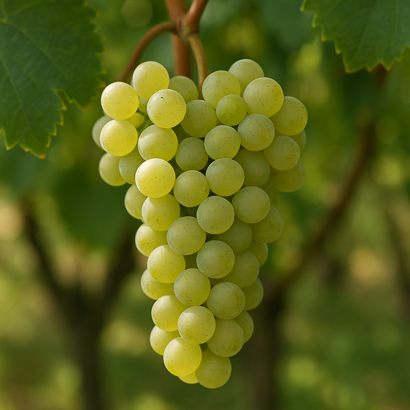Bright, aromatic, and endlessly refreshing, Verdejo is one of Spain’s most distinctive white wines. Celebrated for its lively citrus notes, subtle herbaceous character, and elegant minerality, it’s a grape that perfectly captures the sun-drenched spirit of Spain’s heartland. From its origins in the rolling plains of Rueda to its growing global recognition, Verdejo has become synonymous with freshness, finesse, and Mediterranean charm.
A Brief History
The story of Verdejo begins over a thousand years ago in Castile and León, in north-central Spain. The grape is believed to have been brought to the region by North African settlers during the 11th century, where it quickly adapted to the hot, dry climate and high-altitude plains.
By the 15th century, Verdejo had become the signature grape of Rueda, a region just northwest of Madrid. Historically, it was used to make a rich, oxidative style of wine known as Dorado Rueda, which was fortified and aged in oak barrels. However, by the late 20th century, winemakers began modernizing production techniques — embracing temperature-controlled fermentation and stainless steel tanks — to craft the bright, aromatic white wines that define Verdejo today.
These innovations transformed Verdejo’s reputation from rustic to refined, propelling Rueda onto the world wine stage. Today, the region’s wines stand as some of the best expressions of Spain’s modern white wine renaissance.
Where It’s Grown
Rueda DO remains the spiritual home of Verdejo, where the grape accounts for more than 85% of all plantings. The region’s high altitude (600–800 meters) and gravelly, limestone-rich soils provide perfect growing conditions — warm days for ripening, cool nights for preserving acidity.
Outside Rueda, smaller plantings of Verdejo can be found in Castilla-La Mancha and Extremadura, as well as experimental vineyards in Australia, California, and Chile, where its crisp, herbal qualities have attracted adventurous winemakers.
Tasting Notes
Verdejo is typically light- to medium-bodied, with crisp acidity and a distinct aromatic profile. On the nose, it offers lime, green apple, and pear, often accompanied by hints of fennel, white flowers, and citrus zest.
On the palate, Verdejo is clean and vibrant, balancing zesty fruit flavors with subtle herbal and nutty undertones. Some winemakers age it on the lees or in oak barrels, adding texture, creaminess, and notes of almond, honey, and spice.
Serve chilled (around 48–50°F) to highlight its freshness. Verdejo pairs beautifully with seafood, tapas, salads, grilled vegetables, and goat cheese, and it’s equally delightful on its own as an aperitif.
The Essence of Verdejo
Verdejo is the embodiment of Spanish sunshine and simplicity — a wine that radiates brightness and character with every sip. It combines the vibrancy of Sauvignon Blanc with a distinctly Iberian edge, offering both freshness and depth.
From its ancient roots in Rueda to its growing acclaim around the world, Verdejo remains a testament to Spain’s winemaking evolution. It’s the perfect choice for those who seek purity, balance, and a taste of modern Spain — bottled with elegance and energy.







